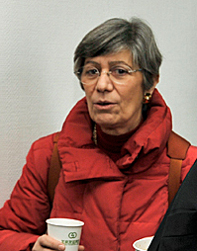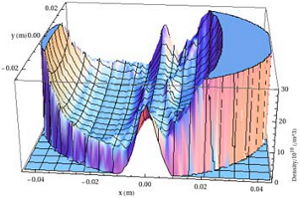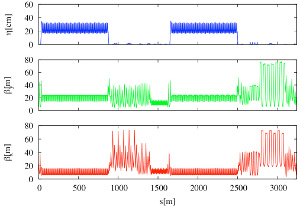Over the past two years, the GDE has concentrated its efforts on advancing critical ILC R&D in order to reduce risks and to demonstrate performance. In parallel, we have established a new, more coherent and more cost-effective baseline to be used for the next phase of developing the technical design that will be incorporated in the ILC Technical Design Report (TDR) that we plan to complete at the end of 2012. As part of the process of developing the technical design and performing the associated R&D, the GDE project managers have begun to carry out a series of technical baseline reviews on the major subsystems. The first of these reviews, which focused on the damping rings, took place from 7-8 July at Frascati Laboratory in Italy.
Now that we have established a new baseline, the GDE project managers have initiated a process of new status reviews for the TDR design work and associated R&D, in order to guide the scope and issues for the remaining work for the TDR report that is planned for the end of 2012.

Susanna Guiducci, leader of the ILC Damping Ring Group and host of the Technical Baseline Review at Frascati Laboratory in Italy
The first of the new reviews was focused on the damping ring (DR) systems. The proposed and approved changes to the damping rings, as stated in the proposal, include:
- A reduction of the number of bunches per pulse (nb) by a factor of two from 2625 to 1312.
- A corresponding reduction in the circumference of the damping rings from 6476 m to 3238 m (i.e. 50%), while maintaining the DR current approximately constant. This includes the associated reduction in DR RF power by approximately 50% (primary cost saving),
- An increase in the DR tunnel diameter to accommodate the possibility of installing a third damping ring (second positron damping ring) at some later date, if required (risk mitigation).
The change to a smaller 3.2-kilometre (km) damping ring is a positive step in making a more cost-effective ILC design, but presents a set of new challenges, both in terms of damping ring performance and for the conventional facilities. Much progress has been made in developing the design. For example, in June a new baseline lattice that meets the critical requirements for the damping rings was adopted. This lattice will now be used in completing a more detailed design for the TDR.

Electron cloud distribution versus position after the acceleration of 10 bunch trains. Progress on electron cloud simulations that are so vital for understanding the ILC positron ring performance were reported by Gerry Dugan at the Frascati meeting.
The 3.2-km damping rings are being designed to run with different parameter sets in both 5-hertz and 10-hertz operations and with 1300 and 2600 bunches, where the larger number of bunches implies only a 3.1-nanosecond bunch spacing. The challenge for this configuration is whether the electron cloud effects can be adequately mitigated. To cover that risk, provision is being made to install a second positron ring in the same tunnel; both positron rings will have the same baseline parameters. The bunch spacing will be increased by alternating between the two rings.
This first technical baseline review has helped set the stage for the work to the TDR. The present status was reviewed and future tasks identified. Ongoing work on electron cloud effects from CesrTA at Cornell University are crucial to the whole design and the ability to maintain positron beams that are not blown up by these effects. Much work remains on beam dynamics and collective effects for the new lattice, as well as the system designs (including final specifications of transfer lines, corrector magnets, vacuum systems, etc.). Once the damping rings are well defined enough, the damping ring costing for the TDR can be completed.
There is still considerable work in front of us to complete the TDR damping ring design and costing, but the basic concept is now well defined and the Technical Baseline Review was very useful for defining the remaining tasks.



Recent Comments